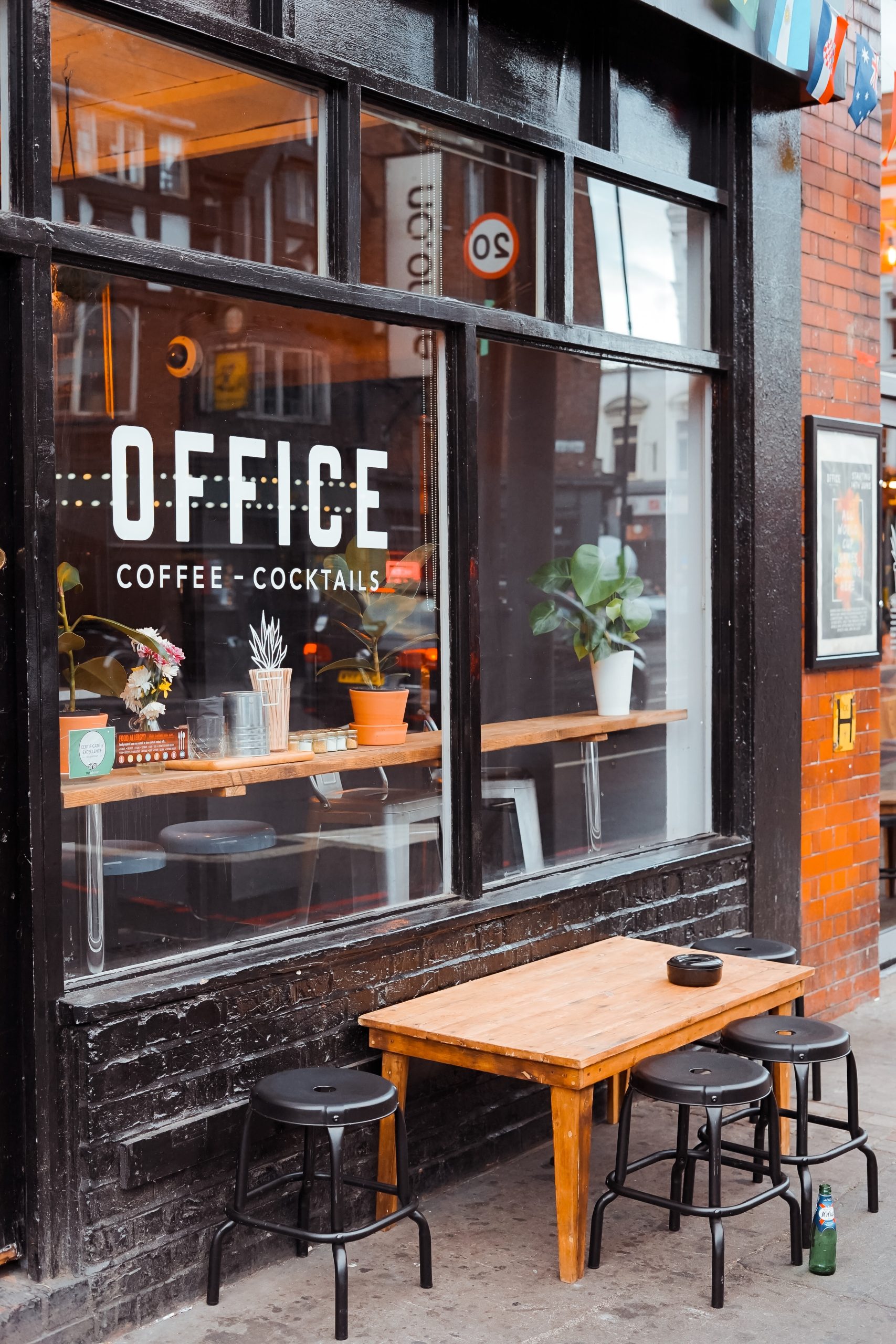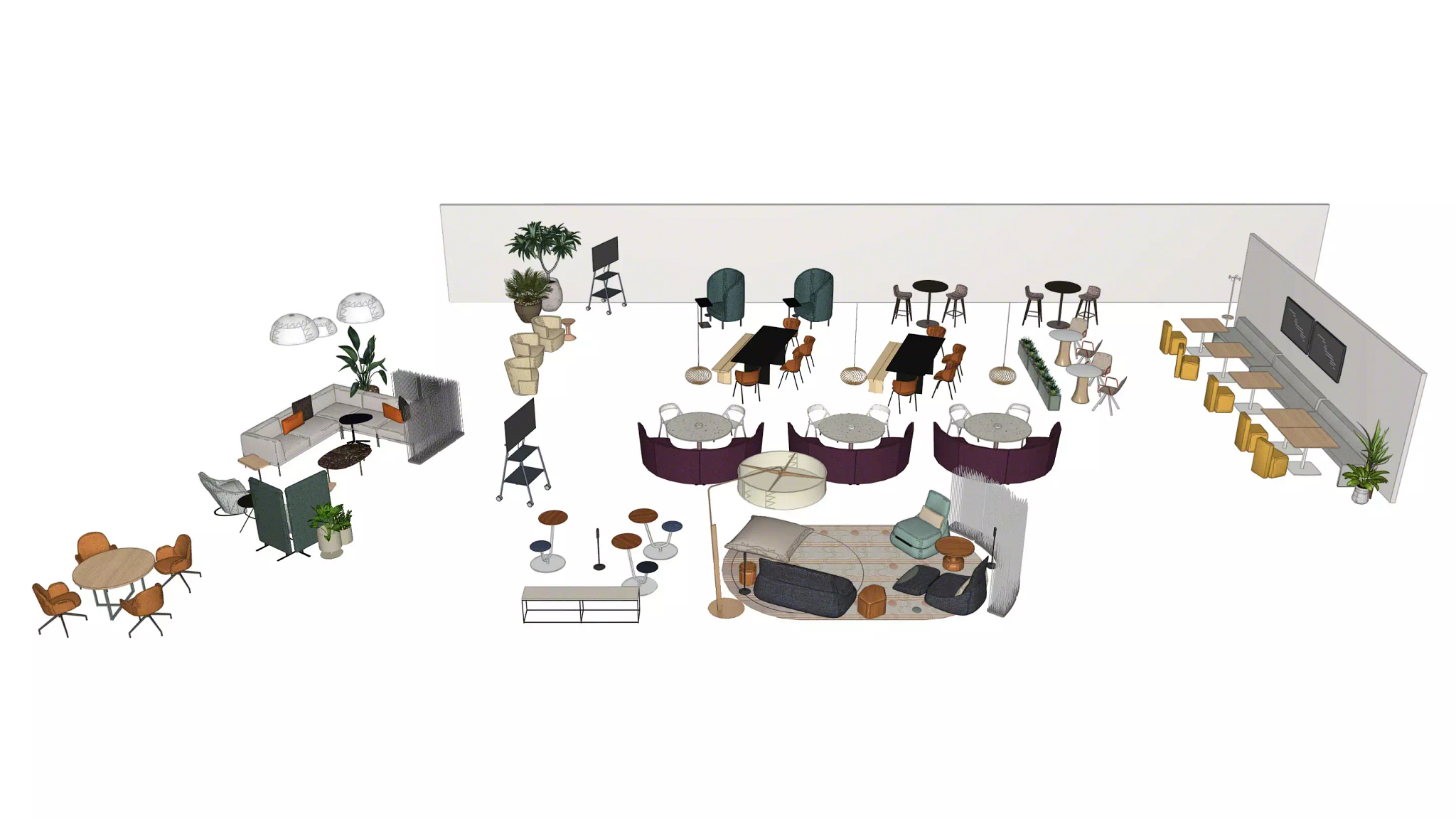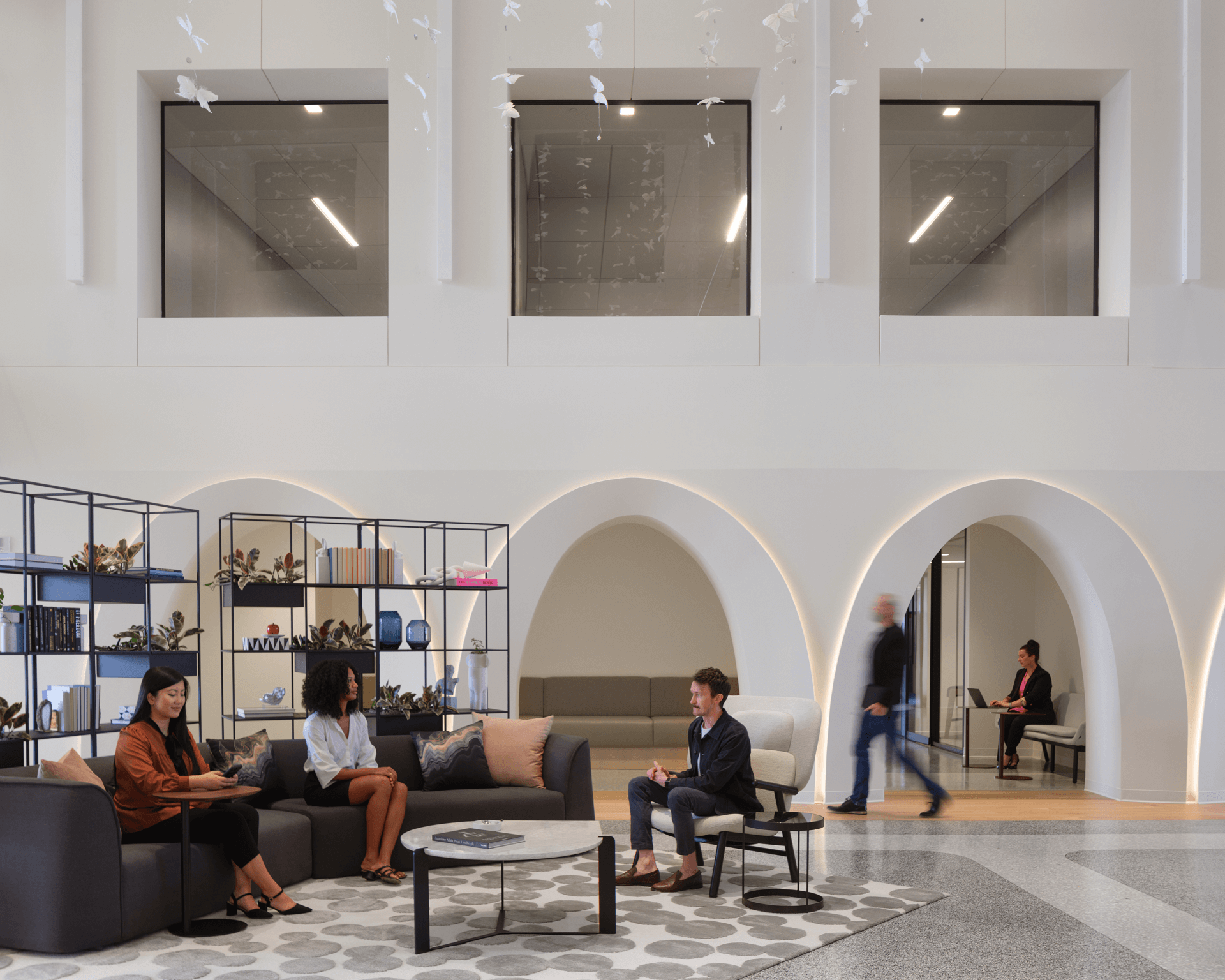Let’s explore 5 key observations that provide a comprehensive guide for navigating the intricate realities of the hybrid work era. From the evolving nature of office spaces to the nuanced needs of diverse generations entering the workforce, the following insights shed light on crucial considerations for organizations aiming to optimize their workspaces. Join us on this exploration as we uncover vital perspectives that redefine the way we understand and approach the future of work. Let’s go!
Workplace Ecosystem and Flexibility:
 Workplaces everywhere are undergoing a significant transformation, expanding into more extensive ecosystems that transcend conventional office settings. This evolution emphasizes the need for offices to provide diverse spaces, tap into local amenities, and compete with alternative work environments such as cafes and coworking spaces. To achieve these goals in workplace flexibility, create diverse workspaces, integrate local amenities that might be found elsewhere, and embrace flexible arrangements. Incorporate technology for seamless virtual collaboration, fostering a dynamic and adaptable environment that aligns with the way your team gets work done.
Workplaces everywhere are undergoing a significant transformation, expanding into more extensive ecosystems that transcend conventional office settings. This evolution emphasizes the need for offices to provide diverse spaces, tap into local amenities, and compete with alternative work environments such as cafes and coworking spaces. To achieve these goals in workplace flexibility, create diverse workspaces, integrate local amenities that might be found elsewhere, and embrace flexible arrangements. Incorporate technology for seamless virtual collaboration, fostering a dynamic and adaptable environment that aligns with the way your team gets work done.
Adapting to Worker Priorities:
The physical workplace is adjusting to accommodate the evolving priorities of employees. Today, employees place a high degree of value on the office as a space for socializing, collaboration, focused work, virtual communication, interaction with leadership, and engagement with their teams. This shift highlights the need for workspaces to cater to a diverse range of functions, accommodating both individual focus and collaborative endeavors.
Generational Workstyle Differences:
Younger generations, comprising Gen Z and Millennials, are surprisingly eager to learn and socialize. They’re on the lookout for positive workplace environments that will complement their efforts to grow both personally and professionally. To meet these preferences, organizations should design environments that accommodate diverse workstyles, ensuring that the workplace promotes the best that this younger workforce has to offer.
Hybrid Meeting Spaces:

About one half of office meetings taking place today adopt a hybrid format, allowing participants to connect both in-person and virtually. To optimize these collaborative sessions, meeting spaces should undergo a redesign that facilitates seamless interaction between physical and virtual attendees. This redesign involves incorporating suitable technology, selecting appropriate furnishings, and establishing clear guidelines for the usage of these spaces, ensuring an inclusive and effective meeting experience for all participants.
Office Experience and Design for Well-being:
Time spent in the office is notably influenced by an employee’s overall workplace experience. Effective design should prioritize cultivating diverse and engaging workplace “vibes,” taking into account the varied needs of employees. This approach aims to not only enhance well-being but also integrates seamlessly into broader workplace and cultural strategies, creating an environment that encourages employees to actively choose and enjoy their time in the office.
Staying Ahead means Staying Agile
As the landscape of work continues to evolve, organizations must thoughtfully navigate the complexities of the modern workplace. The keys to success lie in adaptability and strategic design. By prioritizing flexible arrangements, integrating local amenities, and fostering a positive workplace experience, organizations can position themselves at the forefront of the evolving work environment. This paradigm shift requires a commitment to inclusivity, well-being, and an agile mindset, ultimately guiding the way toward a future where the workplace seamlessly aligns with the diverse and dynamic nature of contemporary work.
For five additional pointers, check out Gensler’s recent article: 10 Considerations for Transitioning Back to Work in a Hybrid World

